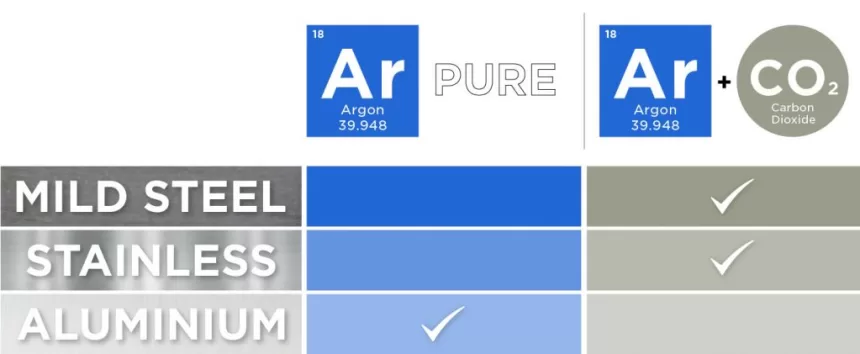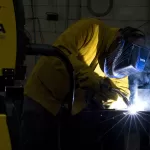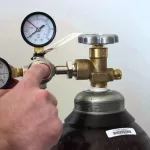When you’re MIG welding, you’re going to need a shielding gas to keep your weld clean. (Unless you’re going with a flux-cored wire, but that’s not what we’re talking about).
Which Gas Do You Need for Your MIG Weld?
Welding Town
There are a few different gas mixes that you can get, and they all do slightly different things. Unfortunately, there’s not a one size fits all when it comes to getting gas for a weld, so which one is going to work best will depend. The type of metal you use, the metal transfer method, how thick your workpiece is – it all makes a difference.
Gas Types
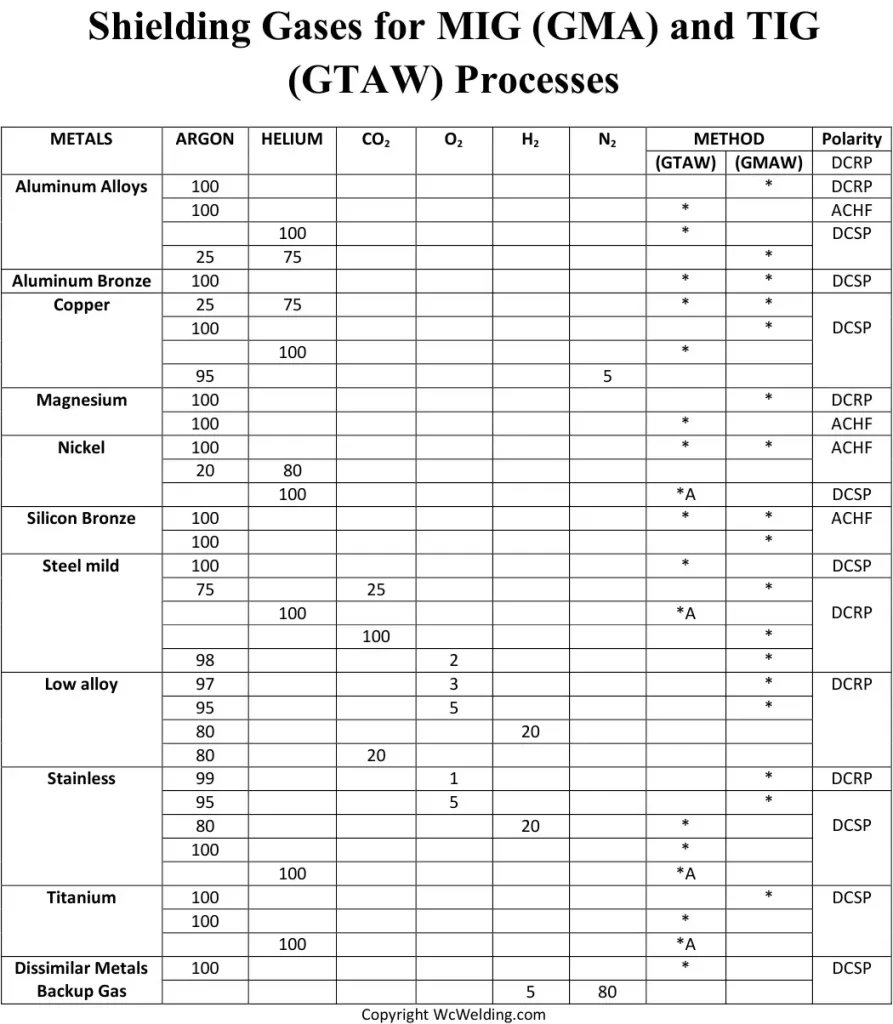
Inert Gas
Inert gases don’t react with external elements (like oxygen and nitrogen), which makes them great shielding gases. Only argon and helium are cost-efficient enough to be used for welding.
Active Gas
Active gases react with external elements, which can affect the arc’s stability, weld penetration, and spatter amount. Active gases are only used on ferrous metals and only in small quantities (as large ones would be damaging).
Semi-inert gases, like carbon dioxide, are a combination of inert and active gases. Because they react with the weld pool, they’re classified as active gases.
MIG Gases
If you’re going to be MIG welding, there are two main gases that are used: pure argon and an argon/carbon dioxide mix. The most common (and recommended) Ar/CO2 mix is a 75/25 ratio, with 75% of it being argon and 25% of it being CO2.
Which one is used for what?
When you’re working with mild steel or stainless steel, you’ll want to use an Ar/CO2 mix.
If you’re working with aluminium, then you’ll want to use pure argon.
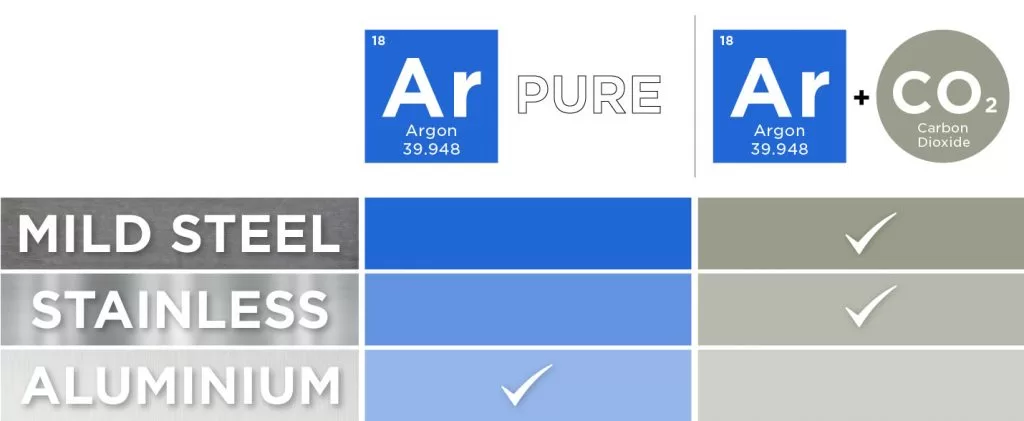
Pure argon (an inert gas) gives shallow penetration but a wider bead profile in a weld. It also results in less spatter.
CO2 (a semi-inert gas) can be used on its own, as it gives deeper penetration than argon (plus it’s cheaper). However, it produces a harsher, less stable arc, which results in a lot of spatter.
Combining the two gives you a fully penetrative weld and good arc characteristics without a crazy amount of spatter. That’s why a 75/25 Ar/CO2 gas mix is the best for mild and stainless steel. These days it is often advertised as ‘MIG gas’ as well.
Other gases and their mixes
Argon/CO2 mixes:
While argon and CO2 can both be used on their own depending on the application, and a 75/25 mix produces great results on most things, there are a few other combinations that work.
98% Ar/2% CO2
This mix is called C2 and is generally used on stainless steel. It’s a cheaper option than a tri-mix (see below) but works in the same way.
82%-92% Ar/18%-8% CO2
This mix (anywhere in the range works) is used when using the spray transfer method. Straight CO2 or the standard Ar/CO2 mix is limited to short-circuit MIG, so the gas needs to be adjusted in order to spray transfer.
Helium
Like argon, helium is an inert gas and is most commonly used in colder climates. It burns hotter than other gases, so it gives deep penetration to the weld. That’s why it is often added in small dosages to argon, which allows you to work on thicker materials with ease.
However, helium can be quite expensive, so even though it can be used on its own, it’s more often only used as a mix. The only exception to this is when it is used in tri-mixes for stainless steel.
Helium mixes:
- Ar/He
- He/Ar/CO2
- He/Ar/O
A tri-mix can be used with stainless steel for extra penetration, with 90% helium, 7.5% argon and 2.5% CO2/oxygen. The helium provides the needed heat while the CO2/oxygen helps with penetration and stabilising the arc.
Oxygen (an active gas) can be added in very small amounts (1%-5%) to increase the penetration of a weld and stabilise the arc. It is a cheaper alternative to helium and works better on ferrous metals.
Oxygen mixes:
- Ar/CO2/O
- Ar/O
Oxygen is only added in small amounts, thanks to excess amounts being damaging. Shielding gas is needed to keep oxygen (and the resulting porosity) out of the weld pool. Adding too much to your shielding gas will have the same effect as having no shielding gas.
What happens when you get it wrong?
Choosing the wrong shielding gas isn’t recommended, and it’ll leave you with some unwanted weld defects.
If you were to use pure argon as your shielding gas for a weld on mild steel, more often than not, you’ll be left with an inconsistent bead and lots of spatter.
If you used a highly penetrative mix, like an argon/helium mix, on really thin metal, then you’ll spend more time blowing holes through it than you would actually welding it.






